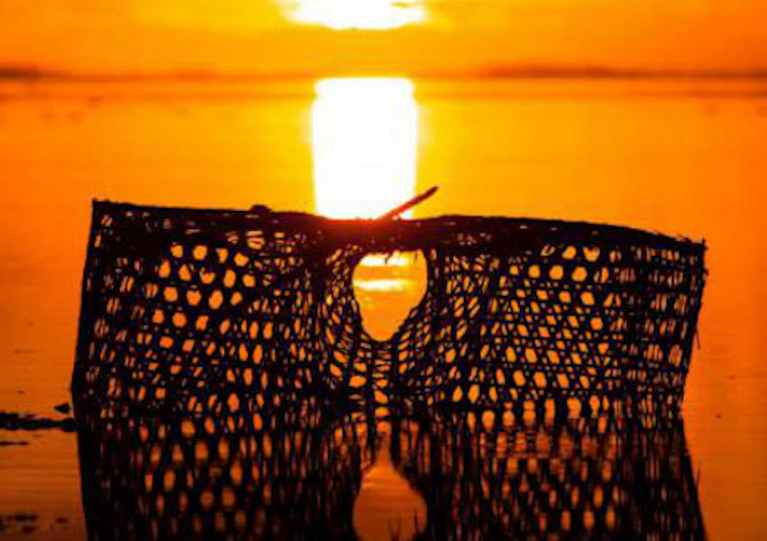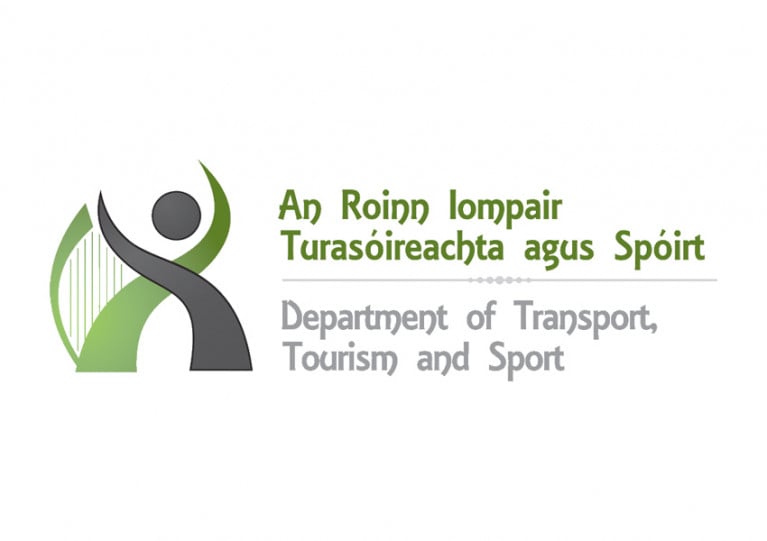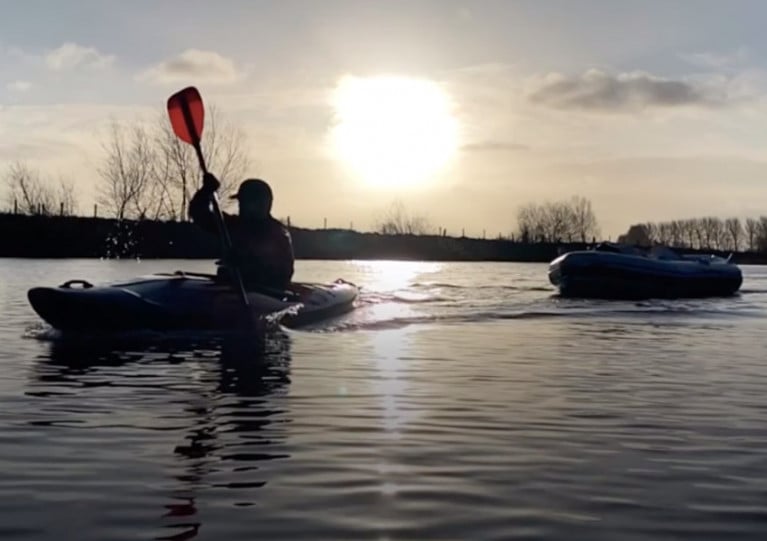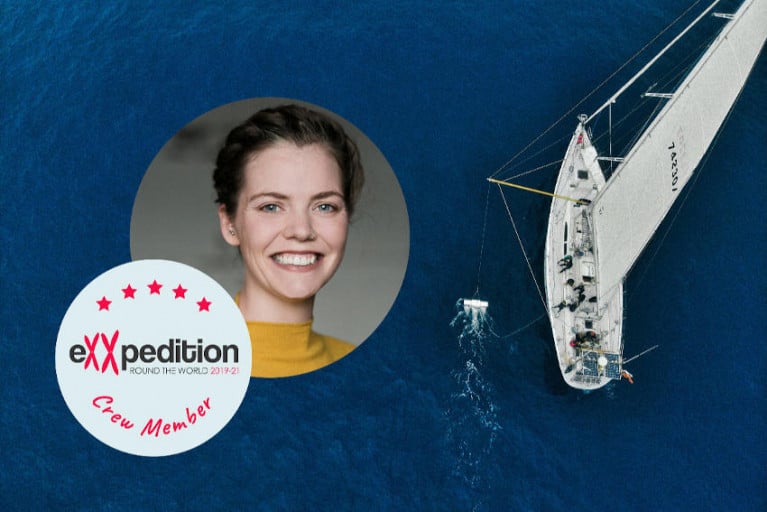Displaying items by tag: pollution
Mandatory downstream river warnings after pollution incidents and stricter controls on treatment of urban wastewater, which affects the marine environment, are among measures proposed by the European Commission to ensure cleaner air and water.
The proposals, which will now be considered by the European Parliament and the Council, will take effect progressively, with different targets for 2030, 2040, and 2050, it says.
This will give industry and authorities time to adapt and invest where necessary, the Commission says.
The proposals are part of the European Green Deal's zero pollution ambition of having an “environment free of harmful pollution by 2050”.
“The quality of the air we breathe and the water we use is fundamental for our lives and the future of our societies,” Commissioner for the Environment, Oceans and Fisheries, Virginijus Sinkevičius, said.
“Polluted air and water harm our health and our economy and the environment, affecting the vulnerable most of all. It is, therefore, our duty to clean up air and water for our own and future generations,” he said.
“The cost of inaction is far greater than the cost of prevention. That is why the Commission is acting now to ensure coordinated action across the Union to better tackle pollution at source - locally and cross-border,” he said.
The revised Urban Wastewater Treatment Directive will “help Europeans benefit from cleaner rivers, lakes, groundwaters and seas, while making wastewater treatment more cost-effective,” the Commission says.
“To make the best possible use of wastewater as a resource, it is proposed to aim for energy-neutrality of the sector by 2040, and improve the quality of sludge to allow for more reuse contributing thus to a more circular economy,”it says.
Obligations to recover nutrients from wastewater, new standards for micropollutants and new monitoring requirements for microplastics are among the new measures.
As 92% toxic micro-pollutants found in EU wastewaters come from pharmaceuticals and cosmetics, a new Extended Producer Responsibility scheme will require producers to pay for the cost of removing them, the Commission says.
“This is in line with the ‘polluter pays' principle and it will also incentivise research and innovation into toxic-free products, as well as making financing of wastewater treatment fairer,”it says.
Building upon the Covid-19 experience, the Commission says it proposes to systematically monitor wastewater for several viruses, including CoV-SARS-19, and anti-microbial resistance.
EU countries will be required to ensure access to sanitation for all, in particular vulnerable and marginalised groups.
EU countries will be required to track industrial pollution at source to increase the possibilities of re-using sludge and treated wastewater, avoiding the loss of resources. Rules on recovering phosphorus from sludge will support their use to make fertiliser, benefiting food production.
The changes are estimated to increase costs by 3.8% (to €3.8 billion a year in 2040) for a benefit of over €6.6 billion a year, with a positive cost-benefit ratio in each Member State.
Based on up-to-date scientific evidence, the Commission is proposing to update lists of water pollutants, and 25 substances with well-documented problematic effects on nature and human health will be added to the lists.
These include:
- PFAS, a large group of “forever chemicals” used among others in cookware, clothing and furniture, fire-fighting foam and personal care products;
- a range of pesticides and pesticide degradation products, such as glyphosate;
- Bisphenol A, a plasticiser and a component of plastic packaging;
- some pharmaceuticals used as painkillers and anti-inflammatory drugs, as well as antibiotics.
The substances and their standards have been selected in a transparent and science-driven process.
Drawing on the lessons from incidents such as the mass death of fish in the Oder river, the Commission proposes mandatory downstream river basin warnings after incidents.
Standards for 16 pollutants already covered by the rules, including heavy metals and industrial chemicals, will be updated (mostly tightened) and four pollutants that are no longer an EU-wide threat will be removed, it says.
The negative impact of paper tissues on water consumption and pollution is the theme of the winning entry in an annual Environmental Protection Agency (EPA) contest for young people.
Wong Cheuk Yin Cayden, a student at St Columba’s College in Dublin, combined digital animation with live action, scripting and voiceover to create his video for the EPA’s “ The Story of Your Stuff” competition.
He examined the effects of tissue manufacturing on water consumption, pollution through use of chlorine to make tissues white, habitat destruction and human health.
He calculated that the average person uses 5.2kg of tissues a year, involving more use of water than the average annual Irish consumption per person of same.
Yin Cayden’s video points viewers to more environmentally friendly alternatives, and concludes with a strong reminder to take small steps for a lasting positive impact.
He was awarded 500 euro for himself along with 500 euro for his school.
The use of wet wipes – also harmful to the marine environment – secured the Irish-language prize in the EPA contest for Ellie Ni Chonaill and Anna Ní Mhurchú from Gaelcholaiste Charraig Ui Leighin, Co Chorcaí .
The “climate topic” prize was awarded to Hari Pranavam, Kimi Alcantara, Conall O’Brien and Raeem Siddiqui from Saint Eunans College, Co. Donegal for their entry, entitled “The Story of Beef”.
Now in its sixth year, the EPA competition attracted over 200 entries from schools across the country, as well as the highest number of Irish language entries to date.
The competition encourages young students to realise the influence they can have on their friends and family when it comes to making environmentally responsible consumer choices, according to the EPA.
“With its focus on sustainability, waste management, climate action and environmental protection, the competition asks young people to think, talk and make small changes that can have far-reaching impacts,”the EPA says.
“We are once again heartened by the extent and depth of the response among students to this year’s ‘The Story of Your Stuff’ competition,” Dr Jonathan Derham of the EPA and chair of the judging panel said.
“ This reflects the sincere commitment of Ireland’s young people to encouraging behaviour change and driving climate action. Moreover, it highlights how our young people view environmental issues in a way that is creative, proactive and solutions oriented,” he said.
Holly Walshe from Loreto College Foxrock, Co Dublin won second prize for “The Story of Pens”.
Liam O'Sullivan, Thomas Shaughnessy, Michael Duggan and Lochlann Mechan from Portumna Community School, Co. Galway came third for their video, “The Story of Circuit Boards”.
All winning entries can be viewed here.
‘Check, Clean, Dry’ Campaign to Protect Irish Waterways is Launched
A new initiative to raise awareness about the spread of harmful invasive plant species and the impact of litter on Irish inland waterways has been launched.
The ‘Check, Clean, Dry’ campaign aims to raise awareness about biosecurity and the impacts of litter and is calling on the public to play their part in protecting Ireland’s waterways.
It asks anyone who goes out on the water to help in reducing the risk of spreading invasive species and disease by following the ‘Check, Clean, Dry’ principles:
- Check boats, equipment, clothing and footwear for any plant or animal material, including seeds, spores and soil. Pay particular attention to areas that are damp or hard to inspect.
- Clean and wash all equipment, footwear and clothes thoroughly. If you do come across any plants and animals, leave them at the water body where you found them.
- Dry all equipment and clothing for at least 48 hours — some species can live for many days or weeks in moist conditions. Make sure you don’t transfer water elsewhere. (If complete drying is not possible then disinfect everything.)
Leave No Trace Ireland is leading the initiative in partnership with Waterways Ireland, the National Biodiversity Data Centre, Sport Ireland, Canoeing Ireland, Inland Fisheries Ireland, Marine Institute, Outdoor Recreation Northern Ireland and Sport Northern Ireland, with the support of the National Parks and Wildlife Service (NPWS).
Launching the campaign, Padraic Creedon, ecologist with Leave No Trace Ireland, said biosecurity is all about reducing the risk of introducing or spreading invasive species and harmful disease in rural and urban environments.
“Ireland is facing an increased threat of invasive alien species in and on its waterways,” he said. “These are non-native species that have been introduced by human intervention, outside their natural range that can threaten our native wildlife, cause damage to our environment, economy and human health.
“Water soldier (Stratiotes aloides), chub and pink salmon are just some of the species threatening Ireland’s waterways.”
Waterways Ireland chief executive John McDonagh added that the cross-border body for Ireland’s inland navigations “is delighted to partner on this important campaign with Leave No Trace Ireland.
‘The introduction or spread of invasive species is of key concern as it negatively impacts our native biodiversity’
“Our inland waterways are rich ecological and heritage corridors, enjoyed by a variety of recreational users. The introduction or spread of invasive species, both terrestrial and aquatic, is of key concern as it negatively impacts our native biodiversity and can seriously disrupt people’s enjoyment of the waterways.
“We would strongly urge our users to adopt the ‘Check, Clean, Dry’ approach so we can all work together to preserve this valuable resource for current and future generations.”
Malcolm Noonan, Minister of State for Heritage and Electoral Reform, also expressed his support for the campaign. The minister noted that tackling invasive alien species is vital to our efforts to halt biodiversity loss, and that the Programme for Government provides for development of a new National Invasive Species Management Plan.
“Invasive species are a serious threat to our biodiversity, and I fully support the efforts of Leave No Trace and their partners in this new campaign to raise awareness about ‘Check, Clean, Dry’ protocols,” he said.
“I’m delighted to see my Department’s strong engagement in this initiative through Waterways Ireland and the National Parks and Wildlife Service, and hope that it will help to improve vital biosecurity measures all over this island’s waterways.
“Through the British Irish Council, the NPWS also engages with counterparts in Great Britain to encourage water users on both sides of the Irish Sea to apply these simple but effective measures.”
Information and updates on the ‘Check, Clean, Dry’ Campaign will be available on the National Biodiversity Data Centre’s new invasive species website at invasives.ie as well as through Leave No Trace Ireland’s website and its partners’ social media channels.
Irish Water Pleads Guilty Over Pollution of Vulnerable Freshwater Mussel Habitat
Irish Water has admitted multiple counts over a pollution event that threatened vulnerable freshwater pearl mussels in a Co Cork river, as The Irish Times reports.
The water utility pleaded guilty to eight counts of breaching is licence terms in connection with highly elevated levels of ammonia and orthophosphate in run-off from a treatment plant in Boherbue, in the northwest of the county.
The case was brought by the Environmental Protection Agency, who gave evidence to the court on the status of the rare mussels in the protected conservation area of the Brogeen River.
The Irish Times has more on the story HERE.
Minister of State at the Department of Agriculture, Food and the Marine, Senator Pippa Hackett has congratulated a number of farmers in Duncannon, Co Wexford on improvements they have achieved in tackling water quality.
Over two-and-a-half years of the department-funded Duncannon Innovation Project, studies show bacterial counts in two streams which flow into the sea have fallen considerably while ecological assessments also show an increase in numbers of many pollution sensitive macroinvertebrate species
Speaking from Duncannon yesterday (Thursday 10 June), Minister Hackett said: “I am really proud of the contribution made by both the farmers and my department to improving the bacterial quality of the two coastal streams that flow onto the beach here.
“While sewage was a factor in Duncannon Beach losing its Blue Flag in 2007, nutrients and sediments from agricultural use were issues, too. So it is gratifying to visit and hear about both the improvement in water quality and the increase in species which have returned to it.”
The project, run in collaboration with Wexford County Council, was awarded €550,000 from the Department of Agriculture, Food and the Marine under the Rural Development Programme, using the European Innovation Partnerships (EIP) model.
Local farmers were provided with a full-time sustainability manager who helped with their Pollution Potential Zone (PPZ) plans and explained how sources of pollution could be dealt with.
Various measures were implemented such as fencing watercourses, putting in arable grass margins alongside the streams, moving water troughs, planting extensive runs of native hedges and implementing enhanced nutrient management planning for all farms.
Minister Hackett was also briefed on how the reduction in pollution from agricultural sources has highlighted other sources of bacterial contamination resulting in Irish Water accelerating planning for a municipal wastewater treatment system for the area to 2021.
“Bringing the start date of that plant forward is really good news for this very scenic area on the Barrow Estuary,” she said.
The Marine Institute has collaborated with 10 European partners as part of the research project Alertox-Net: Atlantic Area Network for Innovative Toxicity Alert Systems for Safer Seafood Products.
Alertox-Net has focused on developing a marine toxin warning network to facilitate the market delivery of safer marine food products in European waters.
Funded by the INTERREG Atlantic Area European Regional Development Fund, Alertox-Net has provided a better prediction system of potential seafood toxicity risk while providing scientific advice to meet the needs of stakeholders.
The Marine Institute says this future-proofing detection and alert system is focused on emerging toxins so that the shellfish aquaculture industry will be prepared and ready to detect potential emerging toxins.
Joe Silke, director of marine environment and food safety services at the Marine Institute, said: “Alertox-Net is providing technical solutions for faster and easier detection methods for emerging toxins to the European shellfish industry, and these resources are currently being collated into one integrated expertise network.”
Alertox-Net has also helped to deliver scientific, technical services and provide advice to regulatory authorities, which will underpin future development in Europe's aquaculture sector.
A recent project meeting included talks on the validation completed on a multi-method for regulating emerging toxins, and the creation of an open access database on toxin isolation and structure elucidation.
The meeting also acknowledged the 20 papers which have been published as part of the Alertox-Net project.
Fisheries Officers Investigate Pollution Incident in Westport River Known for Brown Trout
Inland Fisheries Ireland (IFI) investigated a pollution incident that occurred last weekend on the Carrowbeg River in Westport, Co Mayo.
IFI received a number of calls to the hotline number and had a report from the landowner where the pollution incident occurred last Saturday 16 January.
Fisheries staff responded to the report of what’s understood to be an accidental detergent discharge into the Carrowbeg River that afternoon.
The Carrowbeg River is the main river that runs through Westport town and has an abundant indigenous brown trout population, as well as being is an important amenity to the local community.
IFI officers attended the scene and worked with the landowner to identify the source and to carry out immediate remedial works.
IFI says its staff continue to monitor the site and carried out kayak and drone surveys of the catchment area over the weekend to assess implications for the fishery. Surveys to date have not found any evidence of a fish kill resulting from the incident.
IFI says it has had “subsequent engagement with the landowner regarding remediation works to be undertaken at the site” and is liaising with with Mayo County Council’s Environmental Section on analysis of samples from the affected stretch of river.
Patrick Gorman, Galway director in the Western River Basin District at IFI, says: “Inland Fisheries Ireland urges members of the public to be aware of the environmental risk posed to their local waterbodies should such discharges be made into road or car park drain networks.
“Members of the public can report suspected pollution or poaching incidents to Inland Fisheries Ireland’s 24-hour confidential hotline on 1890 34 74 24.”
National Maritime Pollution Contingency Plan Is Published
The new National Maritime Oil & HNS Spill Contingency Plan (NMOSCP) will establish “a national framework and strategy to co-ordinate marine pollution preparedness and response”, according to the Department of Transport, Tourism and Sport.
Published yesterday (Friday 26 June), the plan aims to address all oil and HNS (hazardous and noxious substances) pollution in the waters of Ireland’s Exclusive Economic Zone, whether it originates from ships, harbours, offshore units, oil/HNS handling facilities or land-based sources.
An “essential feature” of the plan is co-ordination between the Irish Coast Guard and relevant Government and non-State bodies, and it provides “a platform to co-ordinate responses in the context of the Major Emergency Management Framework and separately under the Strategic Emergency Management National Structures and Framework”.
The department adds that the NMOSCP “will address Ireland’s obligation under international convention in respect to preparedness and response to maritime pollution incidents”, and will provide the coastguard with a benchmark for best international practice.
The contingency plan is available to download below, while various standard operating procedures can be found on gov.ie HERE.
Portadown Man’s Crusade To Clean River Bann By Kayak
It started in August last year when Northern Ireland man Jon Medlow noticed the amount of rubbish floating downstream while kayaking in the River Bann near Portadown.
Just a few months later, as BBC News reports, and he’s removed almost 9,000 bottles from the waterway — besides hundreds of discarded footballs, and enough refuse to fill close to 70 bin bags.
The sheer amount of waste even prompted Medlow to purchase a dinghy which he tows behind his kayak to carry the rubbish he collects — and his one-man initiative has now won support from the local council.
BBC News has much more on the story HERE.
Irish Sailor & Artist Joins Women’s Expedition To Research Impact Of Ocean Plastic
An Irish sailor and visual artist will join next month’s leg of an all-female sailing voyage that’s carrying out important research into the devastating impact of ocean plastic.
Claire McCluskey was a relative novice to sailing when in 2016 she and her partner took part in the Atlantic Rally for Cruisers (ARC), the first of two transatlantic voyages she has under her belt.
Now she’s preparing to set out to sea once again, as she has been chosen from over 10,000 applicants to join the crew of eXXpedition Round The World 2019-2020.
The pioneering all-female sailing voyage and scientific research mission is circumnavigating the globe via four ocean gyres and the Arctic.
And Claire is one of 300 women to join the crew over the voyage’s 30 legs over more than 38,000 nautical miles, studying microplastic and toxins in our oceans.
In February and March, Claire will join Leg 7 of the eXXpedition mission to sail 2,000nm from the Galapagos to Easter Island, gathering samples en route from the South Pacific Gyre — a major plastic accumulation zone.
She will be part of an interdisciplinary team which, in addition to assisting with scientific research at sea, will bring together their unique expertise to think of new ways to tackle the problem of plastic pollution.
As a visual artist, this experience will contribute to Claire’s research into our relationship with the ocean, and will inform a new body of work on her return to Ireland. She will also be writing updates and blog posts for the duration of the four-week voyage.
You can Claire’s participation in the eXXpedition voyage via her GoFundMe fundraiser — for which she is also organising a table quiz next Tuesday 4 February from 7.30pm at Bloody Mary’s on South William St in Dublin — and find out more about the Pacific islands leg HERE.




























































